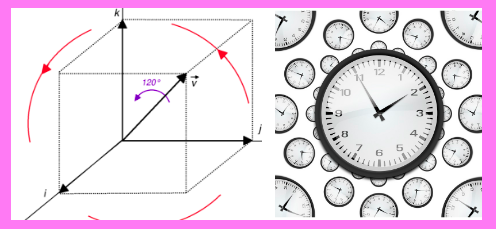


This is a continuation of the discussion in 16: Cognitive structures part 1 of 2.
Spatial orientation: cognitive structure that helps people identify and compare objects and places and relate them to each other:
- 4 types of space:
- material space (real, 3D),
- representational space (abstract, 2D),
- abstract space (uses mental images to transcend real spatial relationships),
- virtual space (uses social or personal norms to establish relationships)
- All coding systems (music, writing, free body diagrams) rely on representational spatial thinking
- Students who struggle with this cognitive structure have trouble with relationship, spatial, virtual and abstract relationships
- Building Spatial Orientation Strategies:
- Ask students: What do you notice? How would it look different from a different point of view?
- Students describe objects relative to other objects
- Students recognize when they need spatial orientations to complete tasks
- Give directions in terms of spatial relationships
- Students provide verbal instructions to another student to build a structure with blocks
- Students draw what they see
- Students draw floor plans of familiar spaces
- Students plan how they move from one location to another
- Student manipulate and represent information using various representations
- Students connect virtual space in terms of personal space, family relationships, etc.
- Students use knowledge of physical location to organize physical world
- Play tic tac toe while students use verbal directions to describe moves.
- Use tic tac toe grid to have students predict position of dot after several rotations
- Students use globe, maps, GPS to locate objects
- Students measure distances using different units
- Students draw things from different points of view
Temporal orientation: cognitive structure of processing information by comparing how things occur in time
- 3 categories: traits (physical ex: on clocks, timers, circadian, psychological perceptions), movement (linear, sequential, circular, simultaneous), type (chronology, change, duration)
- Essential for record keeping, planning, and organizing tasks
- Enhances learning of all subjects
- Helps students delay gratification and moderate impulses
- Building Temporal Orientation Strategies:
- Students recognize time pieces and how they work
- Students experiment with different ways of measuring time
- Students notice the relationship between the clock and the calendar
- Students practice using time to schedule tasks and activities
- Model how to use time management to complete tasks more efficiently and with less stress
- Students notice how verbs express tense
- Students notice how events are related in time
- Student practice noticing time durations – e.g. trip planning, scheduling
- Students notice sequences, series, and ordered relationships
- Students notice recurring cycles – e.g. seasons, water cycle, etc
- Student use timelines to recognize events occur at same and different times

Understanding the cognitive structure that underly skills and knowledge in standards can help teachers develop scaffolding for students that struggle (or not). Recognizing underlying cognitive structures can help teacher identify foundational skills related to standards. Developing these foundational skills may make it easier for students to learn related skills.

Preparation Steps
- Analyze NOUNS, VERBS, and CONTEXTS within targeted standards.
- Identify what cognitive structures are needed to efficiently learn knowledge and skills in targeted standards.
- Pre-assess students to see if they have the cognitive structures needed to learn new knowledge efficiently
- Brainstorm strategies teacher can use to develop cognitive structures related to targeted standards
Early Implementation Steps
- Use pre-assessment results to determine number and degree of activities needed to develop cognitive structures
- Implement activities with elements aimed at developing targeted standards skills and related cognitive structures
Advanced Implementation Steps
- Teach students cognitive structures and encourage them to recognize then they are using them to process information
- Encourage students to deliberately practice specific cognitive structures in order to learn things more efficiently

